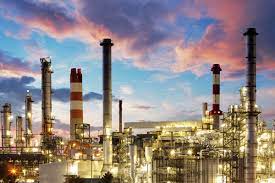Beijing May 12 2022: China’s crude throughput is set to reach a two-year low in April as state and independent refiners have slashed runs because of the latest COVID-19 resurgence that has hurt the country’s appetite for oil products when refineries are undergoing scheduled maintenance, data from S&P Global Commodity Insights showed.
April run rates at the country’s four state-owned refiners fell to 76.4%, the lowest since 76.1% in April 2020.
The utilization rate among Shandong independent refineries dropped to a two-year low of 50.1% as of April 20, data from local information provider JLC showed.
“It’s still unclear about the COVID-19 controls in May, as the recent wave in Beijing has caught attention,” said a Beijing-based analyst, who expressed concern that lockdowns might expand to more Chinese cities.
But fewer refineries will be under maintenance in May, partly easing the pressure to further reduce throughput, the analyst said.
Private sector utilization at the integrated Hengli Petrochemical (Dalian) dropped to about 70% in April, from 102% in March, with maintenance postponed to the second half of 2022, company sources said.
Zhejiang Petroleum & Chemical cut its run rate to about 80% in April, from 88% in March, after it shut one of its four 10 million mt/year crude distillation units.
China’s independent refiners are becoming increasingly confident in snapping up attractively priced Russian crude, after an initial period of caution. After the slump in March inflows, imports of Russian crude by China’s independent refiners recovered 35.7% year on year to 2 million mt in April, S&P Global Commodity Insights data showed May 9.
While state-owned refineries are cautiously buying Russian cargoes amid payment and shipping uncertainties, industry sources said independent refineries were willing to run the risk of securing discounted spot crude imports from Russia, including ESPO and Urals.
Japan’s crude throughput declined 0.3% week on week to 2.86 million b/d over May 1-7, with its crude run rates falling to 82.8% in the week, data released May 11 by the Petroleum Association of Japan showed.
The crude throughput, however, rose 27.4% from a year ago, according to S&P Global Commodity Insights data. The refinery utilization rates declined from 83% the previous week to April 30.
Japan has decided to extend fuel subsidies aimed at mitigating retail price rises until the end of September and to raise the maximum level at least by 40%, the Ministry of Economy, Trade and Industry said April 26. The government started providing subsidies for gasoline, kerosene, gasoil and fuel oil to refiners and oil products importers at the end of January in the wake of steep increases in global oil prices.
The government will extend the subsidy payment period, which was due to run until the end of April, to the end of September, and raise the upper limit of subsidies to Yen 35/liter (27 cents/liter) from the current Yen 25/liter.










